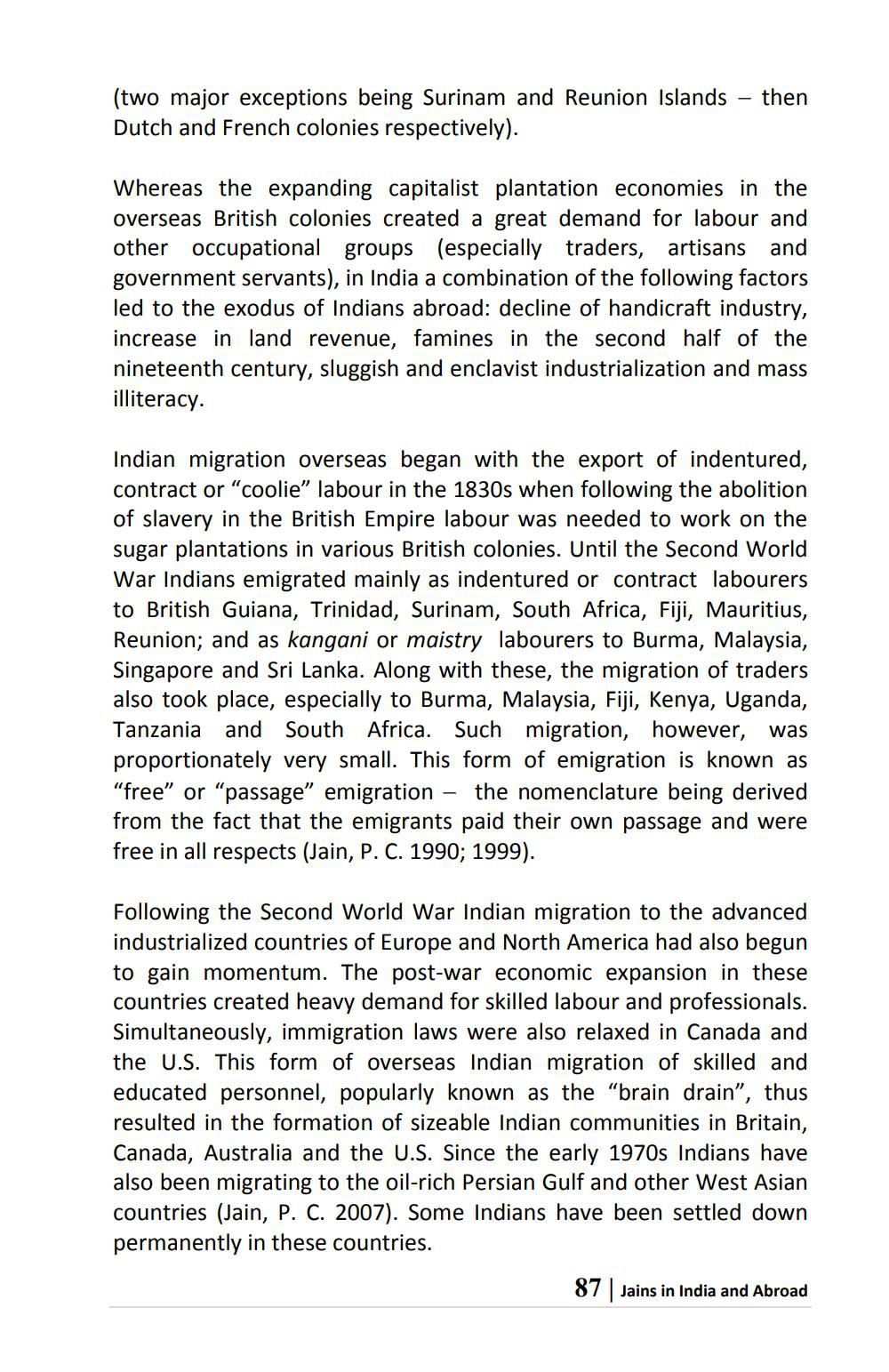________________
(two major exceptions being Surinam and Reunion Islands – then Dutch and French colonies respectively).
Whereas the expanding capitalist plantation economies in the overseas British colonies created a great demand for labour and other occupational groups (especially traders, artisans and government servants), in India a combination of the following factors led to the exodus of Indians abroad: decline of handicraft industry, increase in land revenue, famines in the second half of the nineteenth century, sluggish and enclavist industrialization and mass
illiteracy.
Indian migration overseas began with the export of indentured, contract or "coolie" labour in the 1830s when following the abolition of slavery in the British Empire labour was needed to work on the sugar plantations in various British colonies. Until the Second World War Indians emigrated mainly as indentured or contract labourers to British Guiana, Trinidad, Surinam, South Africa, Fiji, Mauritius, Reunion; and as kangani or maistry labourers to Burma, Malaysia, Singapore and Sri Lanka. Along with these, the migration of traders also took place, especially to Burma, Malaysia, Fiji, Kenya, Uganda, Tanzania and South Africa. Such migration, however, was proportionately very small. This form of emigration is known as "free" or "passage” emigration – the nomenclature being derived from the fact that the emigrants paid their own passage and were free in all respects (Jain, P. C. 1990; 1999).
Following the Second World War Indian migration to the advanced industrialized countries of Europe and North America had also begun to gain momentum. The post-war economic expansion in these countries created heavy demand for skilled labour and professionals. Simultaneously, immigration laws were also relaxed in Canada and the U.S. This form of overseas Indian migration of skilled and educated personnel, popularly known as the “brain drain”, thus resulted in the formation of sizeable Indian communities in Britain, Canada, Australia and the U.S. Since the early 1970s Indians have also been migrating to the oil-rich Persian Gulf and other West Asian countries (Jain, P. C. 2007). Some Indians have been settled down permanently in these countries.
Jains in India and Abroad




